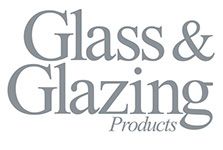

Fire safety is finally getting the attention it deserves. The tragedy is that it took a catastrophe on the scale of Grenfell Tower to make that happen.
We’re now faced with a once-in-a-generation chance to drastically improve fire safety standards throughout construction – and in glass and glazing, we can start with the most basic fire safety product of them all: fire doors.
It’s a fact – fenestration’s attitude towards fire doors has been shockingly poor in many cases.
It’s frighteningly common for manufacturers to fire test their door components separately, rather than testing the completely assembled door set. That can lead to products with FD30 ratings that only last a fraction of the time they’re supposed to. At West Port, we’ve come across manufacturers offering FD30 fire doors that fail in under 15 minutes, which is simply unacceptable.
It’s vital that this changes. As businesses, we need to put aside any thoughts of profit, margins, and getting the edge on the competition – this is about people’s lives.
Every door component must be tested as part of a complete door set. And the 30 minutes in FD30 has to be seen as a bare minimum, not a target. In a fire, seconds count – and that means every manufacturer has a moral responsibility to make their fire door products as good as they can possibly be.
Subjected to rigorous testing by both Cambridge Fire Research and BRE, our own FD30 fire door managed to withstand temperatures in excess of 800 degrees Celsius for 42 minutes 7 seconds, or 40% longer. We’re also now able to offer an FD60 door.
We want to encourage other manufacturers to follow suit – to dedicate themselves to producing fire safety products that offer the most outstanding fire safety performance, and give people the best possible chance of escaping fires unharmed.
That will take hard work and investment. But together, as an industry, we can help make the built environment a safer place.



